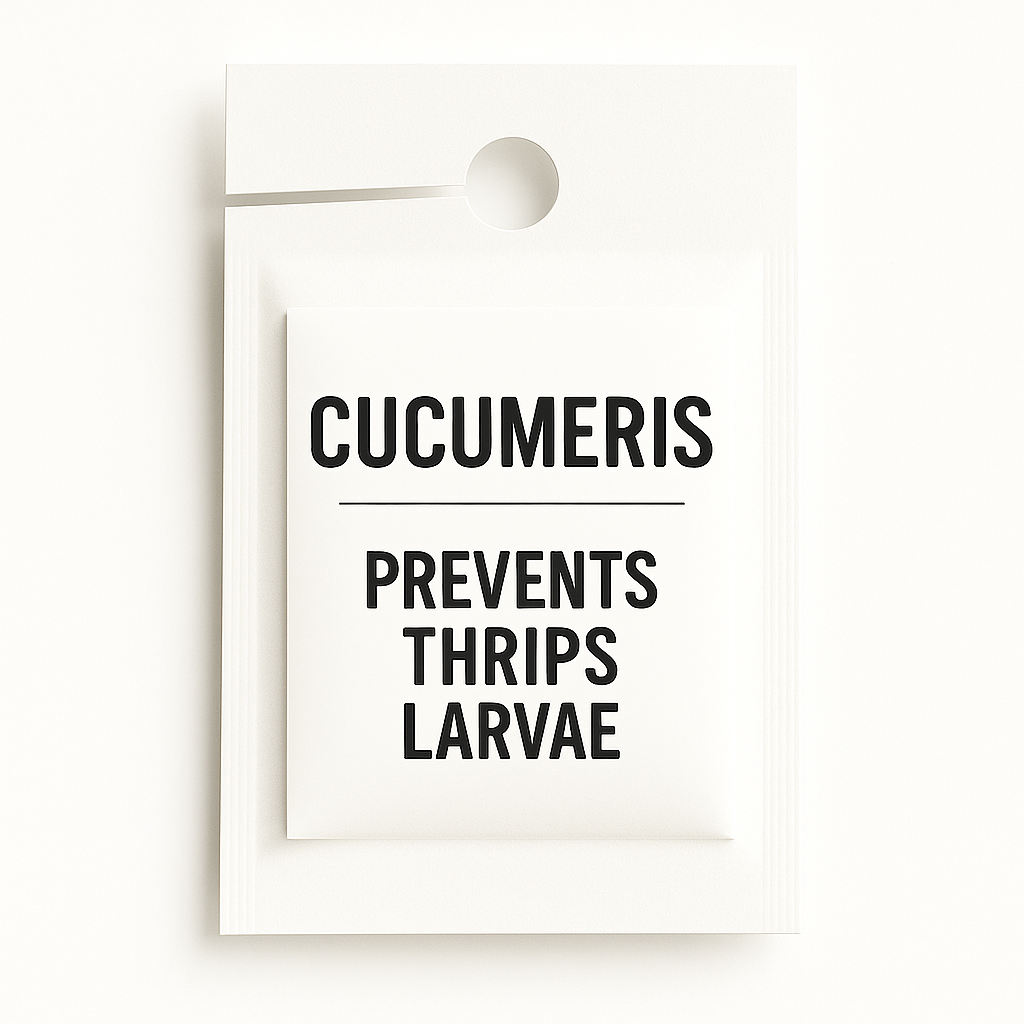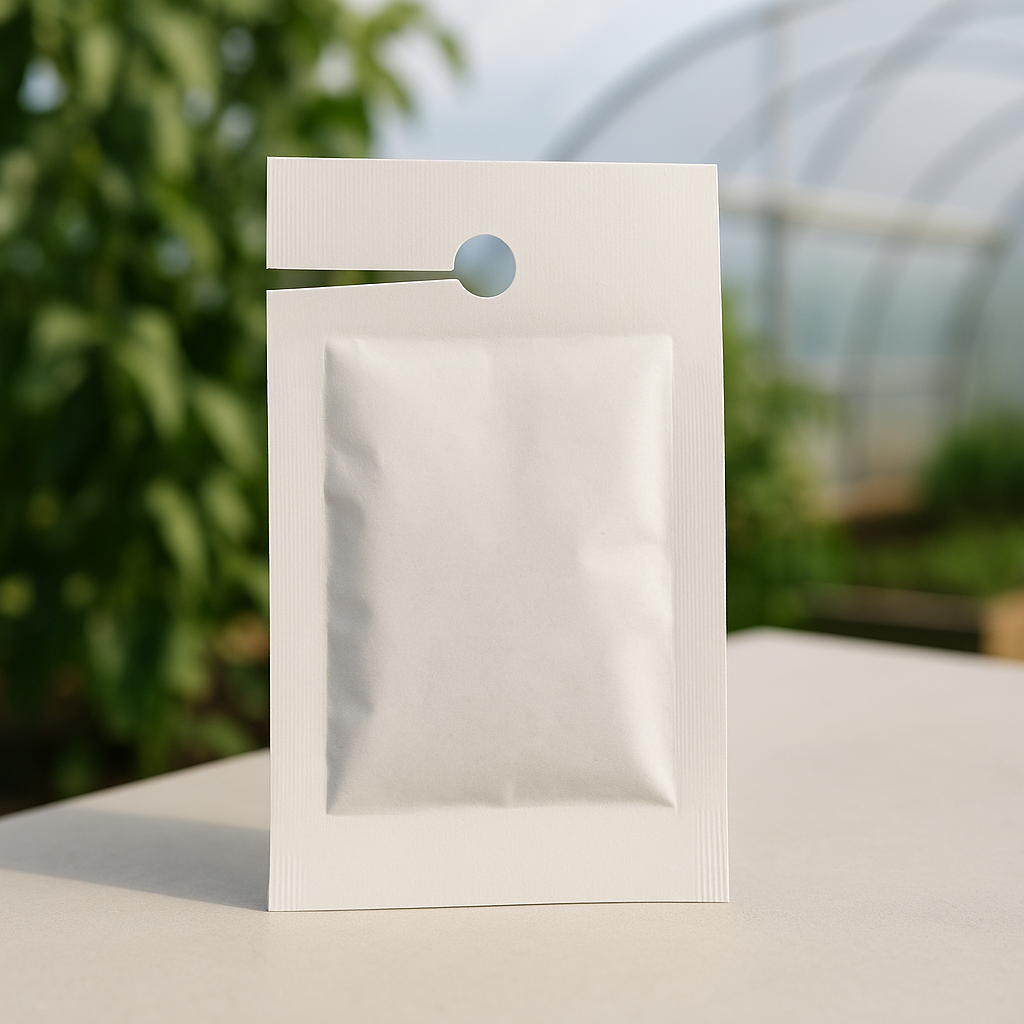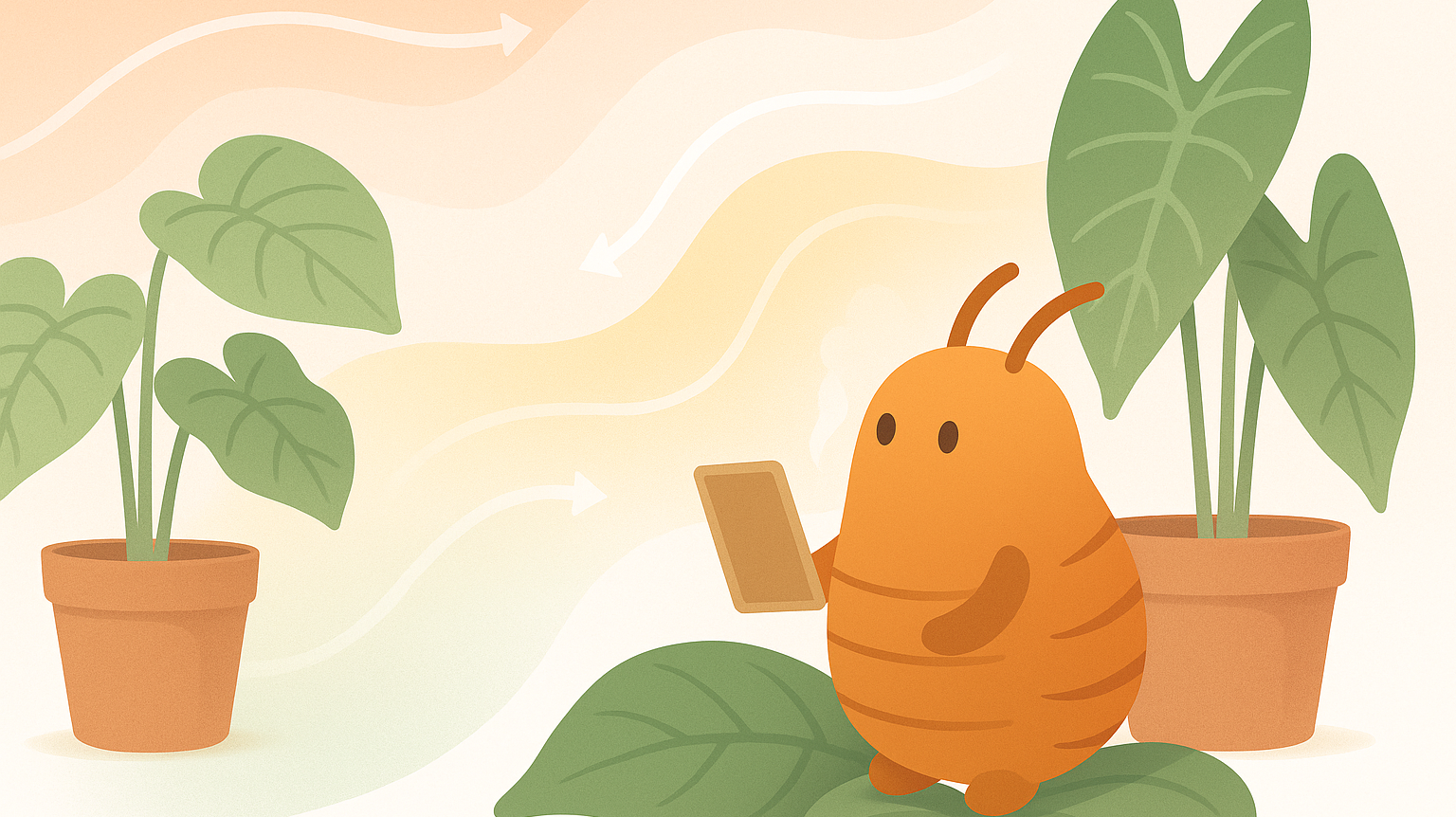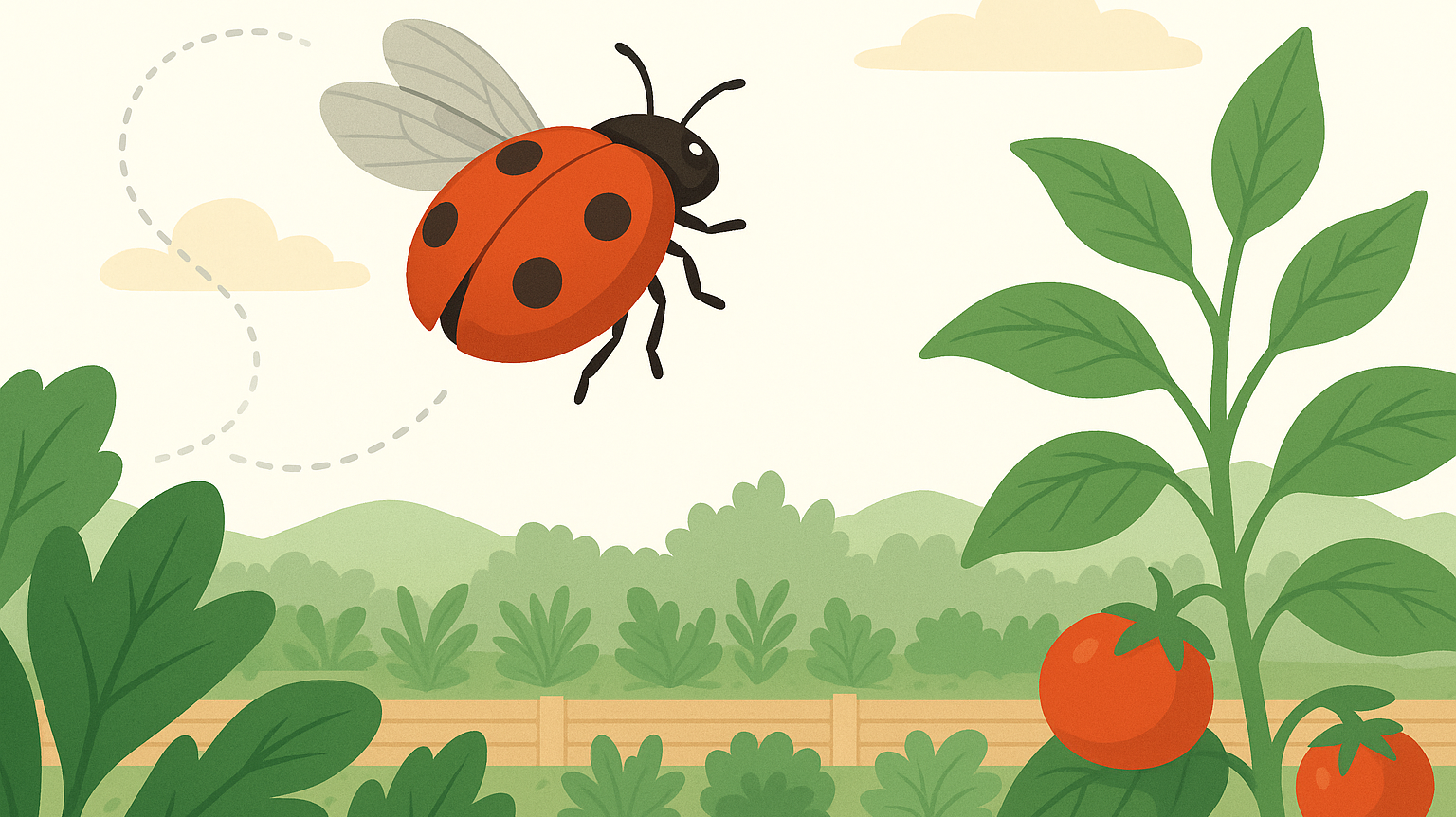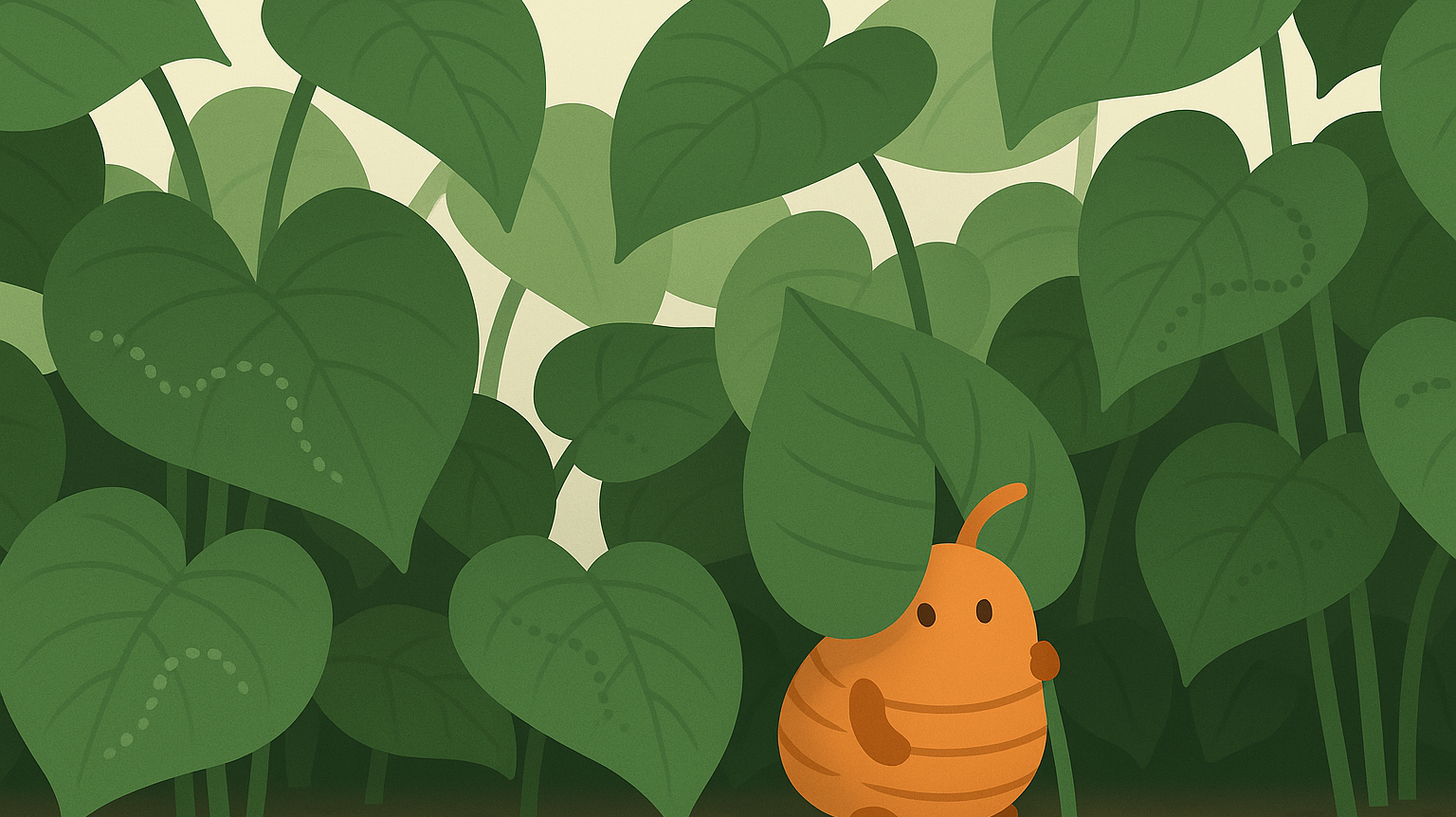How Do You Stop Thrips Before They Start?
You know the pattern: a silvery patch here, a stunted new leaf there—and suddenly your tent or shelf is full of thrips or broad mites. By the time you notice, it’s already spreading.
That’s why you start with cucumeris.
Amblyseius cucumeris Sachets
Biological Prevention for Thrips Larvae, Broad Mites, Cyclamen Mites, and Russet Mites
These slow-release sachets are designed for preventative pest control. Each one contains live Amblyseius cucumeris in all life stages—eggs, juveniles, and adults—that emerge over time and feed on small, soft-bodied pests like:
-
Thrips larvae (Frankliniella occidentalis, etc.)
-
Broad mites
-
Cyclamen mites
-
Rust mites
-
Russet hemp mites
Once the mites exit the sachet, they actively feed—but do not establish long-term populations in your crop. This is a fixed-release tool, meant to provide coverage for 3–5 weeks before being replaced.
Not for Outbreaks or Adult Thrips
Cucumeris only feed on the larval stage of thrips—not adults—and they’re not fast enough to knock down active infestations on their own.
If you’re seeing adult thrips flying or crawling, or visible broad mite damage, pair with:
-
Orius insidiosus for adult thrips
-
Swirskii for faster and broader-stage suppression
-
Cucumeris bottles for a quick response while sachets ramp up
Best For
| Use Case | Why Cucumeris Sachets Work |
|---|---|
| Preventing thrips on houseplants | Targets larvae before damage appears |
| Early broad mite detection | Suppresses populations invisibly |
| Maintaining balance post-treatment | Extends control without reapplication stress |
| Cool or temperate grow rooms | Effective in 66–80°F |
| IPM-focused growers | Fits into layered prevention plans |
How They Work
Each sachet contains:
-
Live adult Amblyseius cucumeris
-
Eggs and juveniles for staggered emergence
-
Bran and carrier material to support humidity
After hanging:
-
Mites exit the sachet over 3–5 weeks
-
They disperse across foliage
-
Adults feed on early-stage pests
-
No colony is established—activity ends when the sachet expires
This makes cucumeris sachets ideal for preventative cycles, not long-term colonization.
How to Use
| Grow Setup | Recommended Use |
|---|---|
| Individual plants | 1 sachet per plant |
| Preventive perimeter | 1 sachet every 6 feet |
| High-risk crops or clusters | 1 sachet per plant or every 3–4 feet |
| Post-bottle transition | Start sachets 5–7 days after bottle release |
| Ongoing pest prevention | Replace sachets every 3–5 weeks |
-
Do not open the sachet—mites exit naturally
-
Hang near foliage, above the watering line
-
Keep out of heavy mist zones or direct irrigation
Best Conditions
| Factor | Ideal Range |
|---|---|
| Temperature | 66–80°F |
| Humidity | Moderate to high RH preferred |
| Lighting | Suitable for natural and artificial grow light setups |
| Airflow | Moderate air circulation is fine; avoid direct fan exposure |
If conditions are dry or variable, consider using a “Plus” style sachet for improved release consistency (see below).
Choose Your Brand
Both options contain the same mite species and quantities—choose based on environment:
Tip Top Bio Control
-
Reliable for standard grow tents, greenhouses, and shelves
-
Excellent for controlled environments with moderate humidity
-
Easy integration for home growers and small nurseries
Koppert “Plus” Sachets
-
Enhanced for drier or more variable environments
-
Improved moisture retention and consistent mite emergence
-
Best for larger grow operations or greenhouses with airflow zones
Pro Tips
-
Start early. Best results come when pest levels are still undetectable.
-
Pair for full lifecycle control. Add Orius or Swirskii to handle adult thrips.
-
Avoid spray residues. Even low-toxicity or oil-based products can suppress cucumeris performance.
-
Hang high and dry. If a sachet gets soaked, mite release will stall.
Safe for All the Right Things
-
Non-toxic and residue-free
-
Pet-safe and pollinator-friendly
-
No re-entry restrictions
-
Fits perfectly in IPM and organic systems
-
Safe for edibles, ornamentals, and foliage plants
-
Invisible in use—no sprays, no film, no scent
Shipping & Storage
-
Ships via 2-Day Delivery with live guarantee
-
Use immediately on arrival
-
If needed, store for up to 24 hours at 45–55°F
-
Do not freeze or expose to dry air or heat
FAQ
How does the Live Guarantee work?
We know how important it is for your mites to arrive healthy and ready to work. That’s why we offer a live arrival guarantee—with flexible options depending on when we hear from you:
- Let us know within 24 hours of delivery: We’ll gladly send a free replacement shipment.
- Let us know within 2–3 days of delivery: We can offer store credit to make things right.
- After 3 days from delivery: Because these are living organisms, we’re not able to offer replacements or credit beyond that window. By then, it’s harder to know what went wrong or whether shipping conditions were a factor.
We truly want your mites to succeed—so please open your package as soon as it arrives and check on them. If something doesn’t look right, don’t wait—reach out and we’ll take care of you.
Where are you located?
We have a number of different locations in NJ, Maine and Oregon. While we'd love to have you, we are not currently open to the public.
Can I call you?
We get it. Sometimes it's easier to talk to someone, and on a case by case basis we can try to figure it out. Unfortunately though, we're really not able to take calls—FGMN is a small nursery, and we're usually elbows-deep in plants or packing boxes. To make sure nothing gets missed (and everyone gets a timely reply), we keep all communication in writing.
Feel free to message us at info@fgmnnursery.com. We mostly respond quickly, but every once in awhile replies may take a day. Do follow-up if you don't hear in that time. We're human, we miss an email here or there.
Too Many Options?
We get it. Try our mite/insect matchmaking quiz and instantly get matched to the solutions you may need.
Our Live Delivery Guarantee
We stand behind every leaf and every mite. If your plant or predatory insects don’t arrive alive on the first delivery attempt, we’ll make it right.
Here’s what you need to know:
- Email us at info@fgmnnursery.com within 24 hours of delivery
- Include clear photos of the item and the shipping label
- Someone must be available to receive the package—plants and bugs don’t do well sitting in the sun, a mailbox, or the back of a delivery truck
For plants, we offer store credit if something goes wrong.
For predatory mites and beneficial insects, you’ll have the choice of a replacement shipment or store credit.
If you contact us after the 24-hour window, we may still be able to help—just know it’s handled case by case.
We pack with care, insulate when needed, and check the weather before shipping. But once it’s in transit, the fastest way to protect your order is to open it right away.
Mite Matters
The Hidden Weather That Shapes Plant and Predator Life
Invisible weather shapes every growing space. Warm air pools under lights, cool air settles near the floor, and in between, tiny predators decide where they’ll thrive. Learn how microclimates influence the balance between plants, pests, and the mites that keep them in check.
If Ladybugs Are Just Going to Fly Away, Why Use Them?
Most ladybugs don’t fly off out of spite — they leave when the environment isn’t right. Learn how temperature, humidity, and shelter affect whether they settle or scatter, and how to create the ideal setup that keeps them working where you need them most.
Where Did My Predatory Mites Go?
Released predatory mites but can’t see them anymore? Don’t panic. Their invisibility is exactly what makes them effective. Learn why they vanish, how they hunt pests out of sight, and why reapplying keeps your plants protected.

